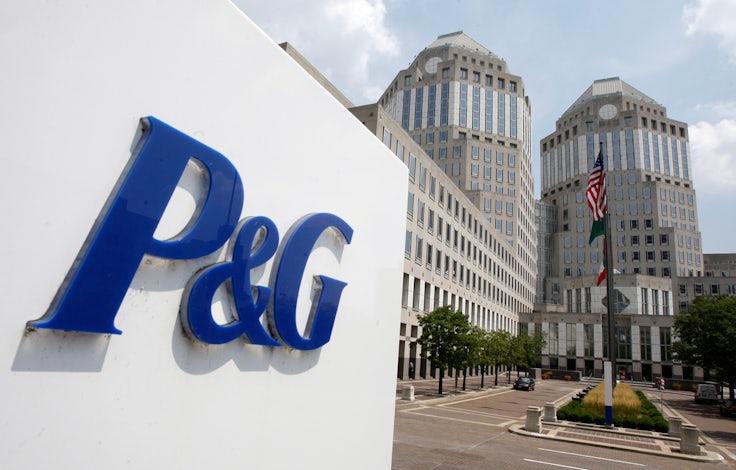Why Pritchard’s speech is a clear sign agencies must ‘reshape’ for the future
Pritchard’s speech highlights a “deepening chasm” between brands and the traditional agency world, one which signals a more integrated approach is on the horizon.

Marc Pritchard, brand chief at the world’s largest advertiser Procter & Gamble, grabbed ad land’s attention (again) last week with his speech outlining the FMCG giant’s plan to take more control of creative and media as it looks to drive “growth with greater efficiency”.
As part of his call to action, he called for creative and media to be reunited. He said that while there were good reasons for separating the two functions at the time, he believes this has only led to extra complexity and cost in today’s digital-first world.
His comments undoubtedly reflect the reality of an increasingly challenging and fast-changing media landscape. There are more ways than ever to reach consumers, but that means brands and their media and creative need to be more aligned than ever before.
That means reuniting creative and media makes strategic and commercial sense – both for clients and agency groups. And as a result Jon Wilkins, chairman of creative agency Karmarama, says the shift is inevitable.
Clients will get more effective outcomes if they can get their media and creative back together.
Jon Wilkins, Karmarama
“Creative agencies have been under pressure for a while and media agencies are about to go through the same thing, so if you’ve got two illogically disconnected businesses that are both under margin pressure, bringing them together makes a lot of sense,” Wilkins tells Marketing Week.
“They’re both struggling. The media agency margin has been made up of a lot of non-transparent practice in the digital space and that’s where (to date) they’ve succeeded in margin, with the transparency agenda at the forefront of most clients minds this will be under pressure’”
Planning and buying to drift apart
While Wilkins is among those who think creative agencies will eventually go full-service, and he believes media agencies might follow suit, not everyone agrees Pritchard’s speech signals a call for the big holding companies to go back to the old-school full-service model.
Tom Denford, founder and chief strategy officer at ID Comms, says it is likely that media planning and buying will become more clearly separated – with the media planning process becoming more closely aligned to the creative development. This would leave media buying as a separate discipline that operates under separate contracts and payment models from planning.
“[Pritchard] is keen for creative and media to work closer with one another, to break down the siloes and eradicate the layers of duplication, especially in planning. Duplication of resources across agencies slows down the process and costs more money – two things which Pritchard won’t stand for,” Denford says.
“I expect we will see gaps opening up in holding companies between their media buying functions and individual agencies as the agencies operate more like value-adding consultancies and charge fees for strategy and planning. Whereas the buying operations will operate on small commissions of buying volume.”
A deepening chasm
Meanwhile, media analyst Alex DeGroote says Pritchard’s latest speech highlights the “deepening chasm” between major brand owners and the traditional agency world – and forecasts many of the big groups breaking up in the not too distant future as pressures continue to mount.
“For many of the major ad agencies and the holding companies which own them, P&G is a key client,” De Groote says. “Hence when P&G suggests it is time to bring many marketing functions in-house, it is time to stop and smell the coffee.”
Where traditional media would have once accounted for around 80% of advertising budget, the likes of Google and Facebook have been hoovering up an increasing portion of that share for some time – platforms that have made national headlines on numerous occasions over the past year for fuelling concerns around brand safety, viewability and ad fraud.
READ MORE: From commodity to lever for growth – The future of media
“This potentially damages the margins of the big ad agency groups, who are used to controlling huge media spend on behalf of the client,” DeGroote adds. “Lower media under management also equates to lower ad rates with the big media owners, again a sign of diminished agency influence.”
If the likes of P&G do start bringing media back in-house, De Groote says we should expect to see an increase in private marketplace deals.
Banging the same drum
Procurement specialist Tina Fegent, meanwhile, thinks a more integrated agency approach will only be a good thing for clients.
“The best work comes when there are no territorial battle lines drawn by agencies on what they do and don’t do and when they have the clients’ objectives for the investment and the marketing activity at the heart of what they do,” Fegent says.
“Agencies have to reshape as the market is changing and we have never had clients like P&G and Unilever be so vocal on many of the topics that quite frankly marketing procurement have been banging the drum about for many years.”






